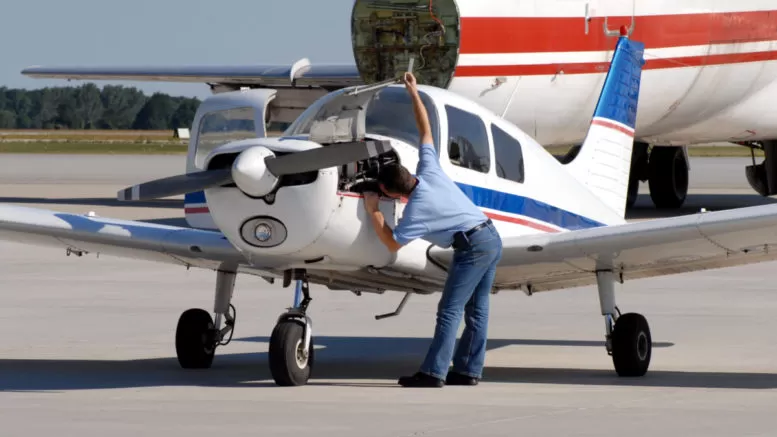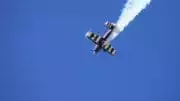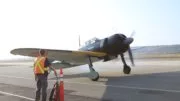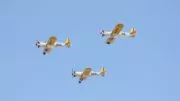Aerobatic planes, also known as acrobatic planes or aerobatic aircraft, are designed to perform aerial maneuvers such as rolls, loops, and spins. While these planes can provide an exciting and thrilling experience for passengers and spectators, it is important to prioritize safety when operating or riding in an aerobatic plane.
Proper training and adherence to safety protocols are essential in preventing accidents and ensuring a safe and enjoyable flight. It is important to have thoroughly trained pilots to ensure they are fit for airshow maneuvers and can avoid costly mistakes. In addition, planes need to be kept in good condition with routine maintenance and inspections.
Importance of Aerobatic Plane Safety
International Safety standards require an aircraft to be routinely inspected to ensure that aerobatic planes are safe for manuevers. An aircraft is subjected to thorough inspection if EASA suspects it to defy any of its organizational standards. These suspicions could source from a list of reasons from information collated from participating states. Their database is analyzed based on this, subsequently providing them intel as to whether or not there are threats to aviation safety. Surprisingly, Inspections have yet to set a specific date across the year.
Aviation companies, on their own, have measures in place to guarantee the safety of their aircraft. Apart from their body, other bodies have joined forces to protect aircraft by formulating rules and regulations binding the affairs of the users and manufacturers of these vehicles. The success of airshows depends on the ability to ensure the safety of pilots, spectators, and planes.
Airshow Operations Guidelines
For hazard-free airline operations, air shows must include guidelines for commercial flights during shows. This can be directives on the routes for different aircraft and other vehicles present, access time and type to the different terminals and borders, crowd control policy, etc.
Aircraft Rescue and Firefighting (ARFF) vehicles also should be pre-positioned during flights to prevent casualties from escalating. Emergency exit routes should be detected and adequately surveyed where spectators are seated in case of any emergency.
In addition, temporary arresting gears should be installed at runway safety zones within 4-5 days before any show. At this time, the threshold has to be marked with white-coated plywood sheets.
Aerobatic Plane Airworthiness Certification
Whenever an aircraft is manufactured, it usually comes with a maintenance program that grants it access to receive airworthiness certification. The certificate can only be issued if the manufacturer provides a comprehensive and concrete plan that guarantees the aircraft is fit for flying within acceptable limits. Aside from particular system tests and rigorous flight tests, a detailed plan must be adhered to highlight the aircraft’s operability under safe conditions.
Aerobatic Plane Inspections
In the United States, a qualified safety inspector, the Inspector in Charge (IIC), is appointed to ensure optimum safety during flights. Therefore, this personnel liaises with the Federal Aviation Authority (FAA) and its other team members to ensure compliance with safety rules in the FAA handbook. A laser measuring device tracks the distance between the show line and the spectators and ensures that none exceeds the approved separation distance.
Majorly the maintenance plan gets reviewed by the Industry Steering Committee, which are representatives of producers, users, and other keynote industry partners. The ISC ensures all formal and operational checklists are considered and covered in the new plan.
The most common types of inspections are Pre-flight checks, 50 and 100-hour inspections, Annual inspections, and Progressive inspections.
Pre-Flight Inspections
In pre-flight inspections, the pilots are required to drive the planes and run through the safety checklist for any technical or mechanical issues in the cabin and exterior parts of the aircraft before the flight.
The 50-and 100-hour inspection occurs only when it’s 50 or 100 hours to the flight time. The significant difference between these two timeframe inspections is that while the 50-hour inspection isn’t prioritized but is necessary for maximum safety, the 100-hour is recommended by FAA.
Annual Inspections
Annual inspection, on the other hand, holds after every 12 months. This is usually an extensive check involving engine, avionics, control inspection, logbook reviews, etc. Any deficiencies or issues discovered during the inspection must be addressed and repaired before the aircraft is cleared to fly again. Annual inspections are typically required by aviation regulatory agencies in order to ensure that all aircraft are safe and fit for operation.
Progressive Inspections
Progressive aircraft inspections are a type of ongoing maintenance program in which an aircraft is inspected and maintained on a regular basis rather than all at once during an annual inspection. The inspection process is divided into a series of smaller inspection intervals. This allows maintenance technicians to identify issues and fix them as they arise. These inspections are often used for aircraft that are in service on a regular basis, which can help prevent issues from becoming more serious over time.
Benefits of Regular Aerobatic Plane Maintenance
Maintenance could be preventive or progressive. Preventive maintenance is every maintenance culture you implement before your vehicle develops a major fault. It is any task done from a list of permitted tasks. It usually occurs and could be as simple as running a quick overall engine test, checking for wear and tear, changing a spare tire, or replacing any standard part. All repairs are classified under major and minor except orderly specified to be preventive.
Improved Mechanical Skill
Aircraft maintenance allows owners to familiarize themselves with the structure and components of the plane so they can recognize issues before problems arise. Maintenance furnishes their understanding of the use and operation of the machinery for future purposes.
Improved Workspace Safety
Noticing and preventing system failure on time makes the aircraft much safer. This aids compliance with workspace safety regulations as preventive maintenance gives mechanics more time to fix technical issues and downtime.
Improved Efficiency
The plane’s efficiency increases when it runs hassle-free with a predetermined schedule. Too many unplanned repairs reduce the machine’s use, rendering it less efficient than its natural functionality. Efficiency also determines the lifespan of some machines.
Reduced Costs
All the benefits mentioned above help to keep the cost down. It’s been estimated by The U.S. Department of Energy that businesses that make use of preventive maintenance save up to 12%-18% on average compared to those who use reactive maintenance. Frequent maintenance also saves money when handled by the owner rather than when outsourcing.
Ready to Soar with Us?





